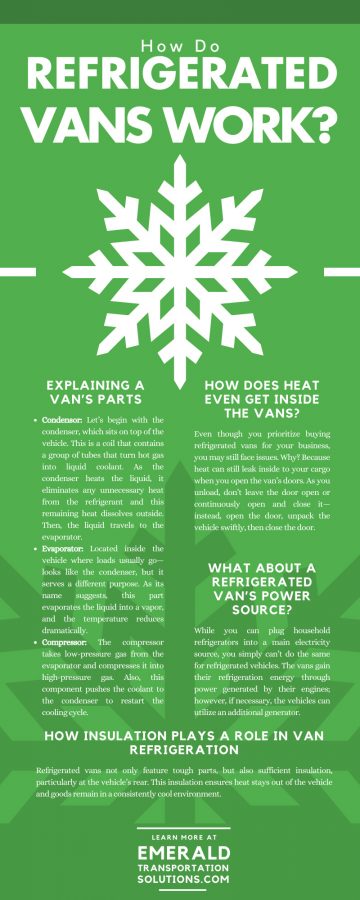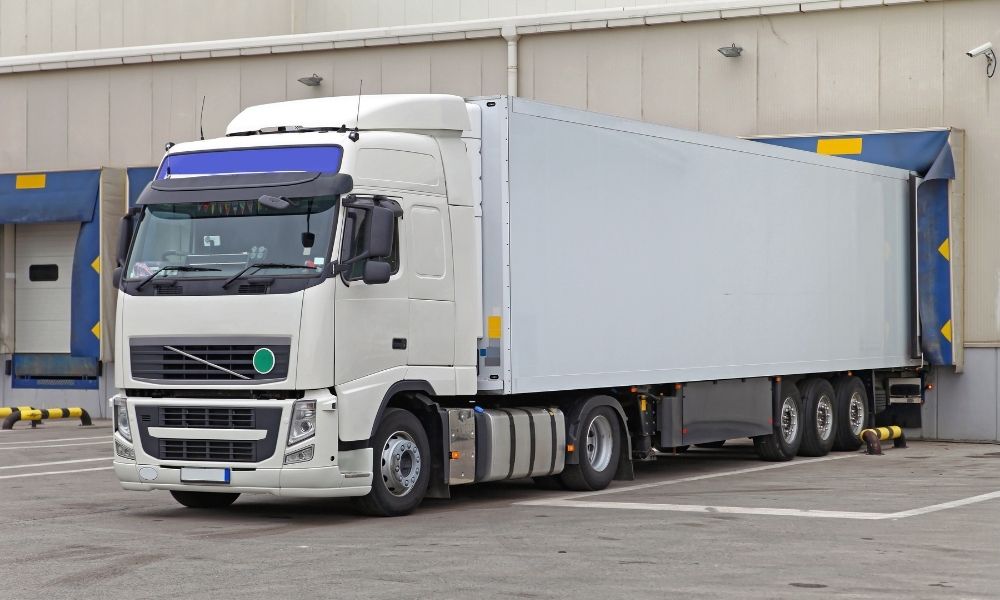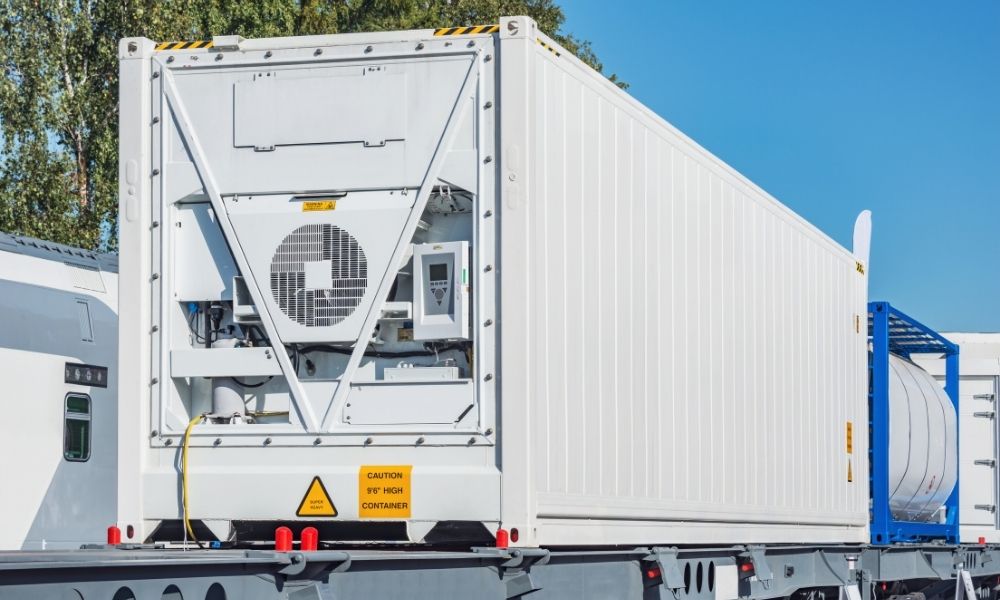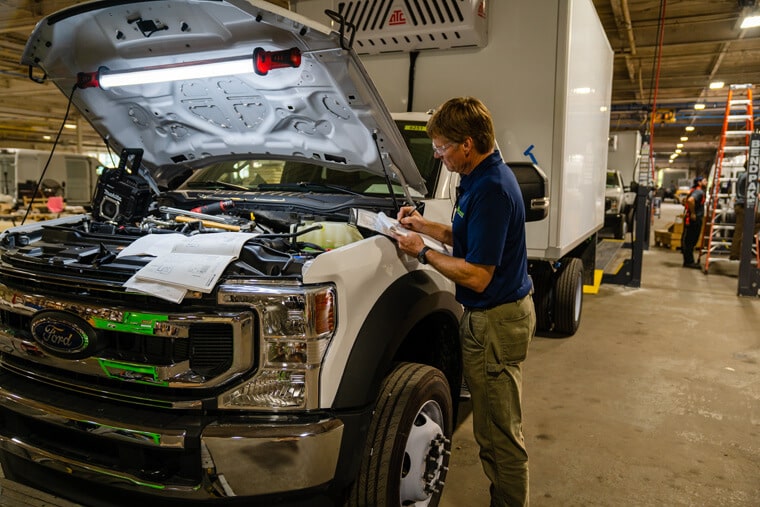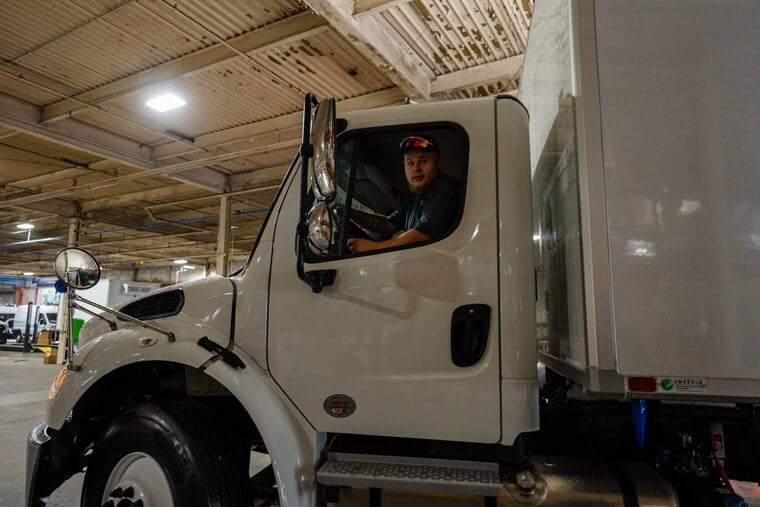
How Do Refrigerated Vans Work?
Joe Dickman | May 10th, 2021
Businesses in numerous industries utilize refrigerated vans to make their goals a reality. How do refrigerated vans work? We expand on everything you need to know. Ahead, we break down all the different components within vans, touch on the complex cooling process, and highlight the industries that use them every single day.
A Refrigerated Van’s Purpose
Before we begin discussing what makes refrigerated vans operate smoothly, we must understand why people use them. First, unlike their truck counterparts, a van is the ideal vehicle for transporting smaller loads that drivers must keep cool. In fact, the FDA maintains stringent laws that require van drivers to adjust vehicles to the ideal temperatures for their specific goods while traveling to their destinations. Additionally, vans often boast improved fuel efficiency over trucks, so they’re just as crucial for long routes. Finally, as we mentioned, companies in several spaces can benefit, and we list just a handful of them below.
Animals
Believe it or not, refrigerated vans allow us to transport animals that thrive in colder temperatures—for instance, honeybees and penguins. On the same hand, the vans are great for animal food, as well; pet food businesses can successfully transport perishable products to pet supply shops and eager owners across different cities.
Art Galleries
When it comes to preventing temperatures from negatively impacting art quality, refrigerated vans are essential. Galleries must often ship fine art and valuable antiques between locations, and special vehicles keep these pieces at a suitable temperature.
Cosmetics
Refrigerated vans are the perfect choice for keeping cosmetic items from spoiling. Products that require a temperature-controlled environment—think lipsticks, perfumes, and skin care items— will stay in optimal condition, both through transport and after reaching their destination.
Foods and Beverages
Of course, refrigerated vehicles are incredibly beneficial for transporting perishable foods such as dairy, meat, produce, seafood, and even beer and wine. Refrigerated vans can even prove ideal for frozen food businesses. Ultimately, refrigerated vans ensure these goods remain safe to consume after delivery.
Plants
Not only do refrigerated vans assist florists in keeping their floral arrangements beautiful, but they also keep plant owners around the nation content. The stable temperatures will allow the plants to thrive while in transit.
Explaining a Van’s Parts
Typically, refrigerated vans will begin as standard vehicles—then, companies can clean the vans out and equip them with their refrigeration systems. Refrigerated vans contain components similar to home refrigerators; however, because refrigerated vans travel and sit outdoors year-round, these parts are more robust. We’re going to cover the three main parts.
Let’s begin with the condenser, which sits on top of the vehicle. This is a coil that contains a group of tubes that turn hot gas into liquid coolant. As the condenser heats the liquid, it eliminates any unnecessary heat from the refrigerant and this remaining heat dissolves outside. Then, the liquid travels to the evaporator.
The evaporator—located inside the vehicle where loads usually go—looks like the condenser, but it serves a different purpose. As its name suggests, this part evaporates the liquid into a vapor, and the temperature reduces dramatically. The low-pressure gas created in the evaporator coil then moves to the compressor.
The compressor takes low-pressure gas from the evaporator and compresses it into high-pressure gas. Also, this component pushes the coolant to the condenser to restart the cooling cycle. Simply put, this part encourages the coolant to travel through the system, and as it circulates, the entire process promotes temperature regulation.
Essentially, the van’s parts work harmoniously to keep temperatures where they need to be for optimal refrigeration. A common misconception is that a van magically becomes cold, but the components simply work to remove engine and exterior heat so it can fully dissipate outdoors.
How Insulation Plays a Role in Van Refrigeration
Refrigerated vans not only feature tough parts, but also sufficient insulation, particularly at the vehicle’s rear. This insulation ensures heat stays out of the vehicle and goods remain in a consistently cool environment. Typically, manufacturers will use a strong polymer foam for the van’s insulation, as it provides the desirable airtight environment for temperature-sensitive goods. In addition to the insulation, you can even add sensors that alert drivers when temperatures begin to shift outside of their desired range.
How Does Heat Even Get Inside the Vans?
Even though you prioritize buying refrigerated vans for your business, you may still face issues. Why? Because heat can still leak inside to your cargo when you open the van’s doors. As you unload, don’t leave the door open or continuously open and close it—instead, open the door, unpack the vehicle swiftly, then close the door.
Additionally, if your parts aren’t in full working order, they can contribute to heat. When you have excess heat, your van has to work harder than necessary, putting parts through even more stress. To keep as much heat as possible out of your van, prioritize quality parts and regularly check and maintain them.
What About a Refrigerated Van’s Power Source?
While you can plug household refrigerators into a main electricity source, you simply can’t do the same for refrigerated vehicles. The vans gain their refrigeration energy through power generated by their engines; however, if necessary, the vehicles can utilize an additional generator.
Now that you have a deeper understanding of how refrigerated vans work, you likely realize the importance of a vehicle that will last. And because refrigerated vans are an investment for your business, you only want to purchase through a company you can trust.
Whether you’ve previously leased vans or you want to replace one of the vehicles in your current fleet, pick up your next refrigerated delivery van from Emerald Transportation Solutions. Our inventory includes vans from Ford, G, Mercedes, Nissan, and RAM—all reputable names in the automotive industry. We also have compact, full-size, mid, and high-roof options, and in addition to the different designs, you can choose from various lengths. Plus, we install our own refrigeration systems, so you can rest assured your van contains reliable cooling technology from our experts. If you have any questions regarding our van selection, don’t hesitate to give us a call.
Related Articles
Contact Us
Feel Free To Contact Us If You Have Any Questions
What does under DOT mean?
Questions regarding DOT requirements come up often. 10,000 lbs GVW (gross vehicle weight) and over are commercial vehicles that fall under the Department of Transportation regulatory requirements.
What is the difference between GVW and payload?
GVW or Gross Vehicle Weight is the entire weight of the vehicle including the payload. The payload weight represents the amount of cargo you are hauling.
What is a self-powered unit and a vehicle-powered unit?
A self-powered unit has its own fuel source and will run independent of the truck. This is the heaviest and most expensive option. While vehicle-powered units run off the engine via a compressor mounted on the engine. These are less expensive and lighter in weight but you must run the truck or plug the electric standby into shore power.
What does K-factor mean and why is that important?
K-factor is a term that stands for the overall insulating value of the container (truck body). Quite simply the lower the K-factor the better the truck body will be able to maintain a given temperature and require less energy to do so.
How much lighter is a Poly Van vs a US spec body?
Poly Van bodies are very light. On average we estimate we are 75-150 lbs per foot lighter than a traditional sheet and post foamed in place body. These weight savings translates to less fuel burn and less CO2 emissions, along with added payload, the most important benefit.
